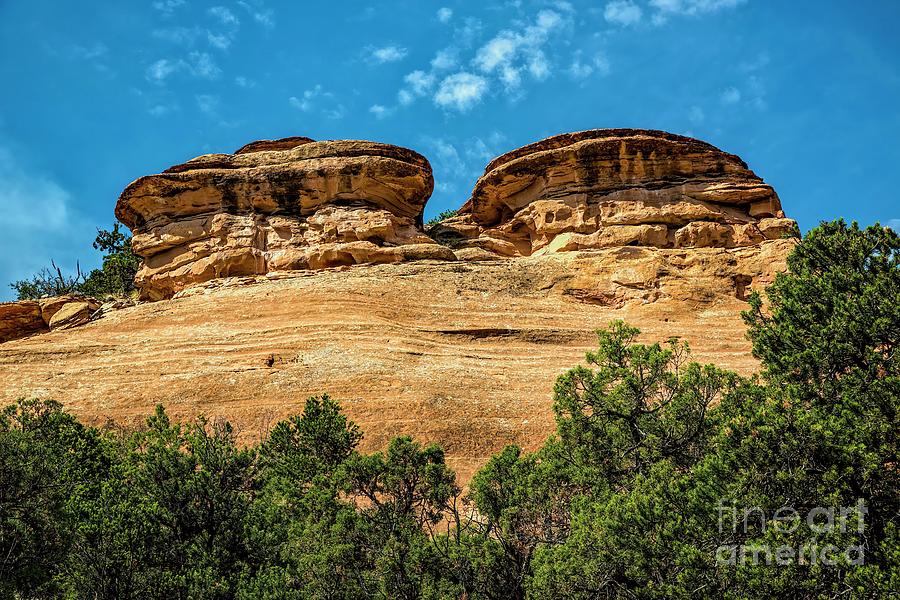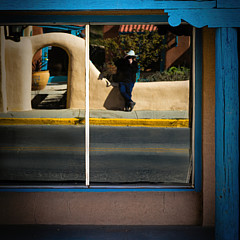
Hoodoos

by Jon Burch Photography
Title
Hoodoos
Artist
Jon Burch Photography
Medium
Photograph - Digital Capture/faa Watermark Will Not Appear On Your Finished Photograph.
Description
A hoodoo, also called a tent rock, fairy chimney, and earth pyramid, is a tall, thin spire of rock that protrudes from the bottom of an arid drainage basin or badland. Hoodoos, which can range from 5-150 feet tall, typically consist of relatively soft rock topped by harder, less easily eroded stone that protects each column from the elements. They generally form within sedimentary rock and volcanic rock formations.
They are found mainly in the desert in dry, hot areas. The difference between hoodoos and pinnacles or spires is that hoodoos have a variable thickness often described as having a "totem pole-shaped body." A spire, on the other hand, has a smoother profile or uniform thickness that tapers from the ground upward.
Hoodoos range in size from that of an average human to heights exceeding a 10-story building having shapes are affected by the erosion patterns of alternating hard and softer rock layers. Minerals deposited within different rock types cause hoodoos to have different colors throughout their height.
They are commonly found in the High Plateaus region of the Colorado Plateau and in the Badlands regions of the Northern Great Plains
Hoodoos are a tourist attraction in the Cappadocia region of Turkey where houses have been carved from these formations. These rock formations were depicted on the reverse of the Turkish 50 new lira banknote of 2005-2009.
In French, they are called demoiselles coiff'es or "ladies with hairdos," and a number of them are found in the Alpes-de-Haute-Provence; one of the best-known examples is the formation called Demoiselles Coiff'es de Pontis.
Đavolja Varos or Devil's Town hoodoos in Serbia feature 202 exotic formations described as earth pyramids or "towers", as the locals refer to them. Since 1959, Đavolja Varos has been protected by the state, and it is also a nominee in the New Seven Wonders of Nature campaign.
The hoodoo stones on the northern coast of Taiwan are unusual for their coastal setting. The stones formed as the seabed rose rapidly out of the ocean during the Miocene epoch. Efforts have been made to slow the erosion in the case of iconic specimens in Wanli.
The hoodoos found in the Drumheller area of Alberta, Canada's badlands are a distinctive feature which continue to attract thousands of visitors each year. These hoodoos in particular formed between 70 and 75 million years ago during the Cretaceous Period as clay and sand sediments from the Horseshoe Canyon Formation were deposited. They are able to maintain a unique mushroom-like appearance as the underlying base erodes at a faster rate compared to the capstones, a rate of nearly one centimeter per year, faster than most geologic structures.
Hoodoos typically form in areas where a thick layer of a relatively soft rock, such as mudstone, poorly cemented sandstone or tuff or consolidated volcanic ash, is covered by a thin layer of hard rock, such as well-cemented sandstone, limestone or basalt. In glaciated mountainous valleys the soft eroded material may be glacial till with the protective capstones being large boulders in the till. Over time, cracks in the resistant layer allow the much softer rock beneath to be eroded and washed away. Hoodoos are formed where a small cap of the resistant layer remains, and protects a cone of the underlying softer layer from erosion. Further erosion of the soft layer causes the cap to be undercut, eventually falling off, and the remaining cone is then quickly eroded.
Typically, most hoodoos are formed by two weathering processes that continuously work together in eroding the edges of a rock formation. The primary weathering force at Bryce Canyon, as an example, is frost wedging. The hoodoos at Bryce Canyon experience over 200 freeze/thaw cycles each year. In the winter, melting snow, in the form of water, seeps into the cracks and then freezes at night. When water freezes it expands by almost 10%, pries open the cracks bit by bit, making them even wider, much like the way in which a pothole forms in a paved road.
In addition to frost wedging, rain also sculpts hoodoos. In most places today, the rainwater is slightly acidic which allows the weak carbonic acid to slowly dissolve limestone grain by grain. It is this process that rounds the edges of hoodoos and gives them their lumpy and bulging profiles. Where internal mudstone and siltstone layers interrupt the limestone, one can expect the rock to be more resistant to the chemical weathering because of the comparative lack of limestone. Many of the more durable hoodoos are capped with a type of magnesium-rich limestone called dolomite. Dolomite, being fortified by the mineral magnesium, dissolves at a much slower rate, and consequently protects the weaker limestone underneath it. Rain is also the chief source of erosion causing the actual removal of the debris. In the summer, monsoon type rainstorms travel through the Bryce Canyon region bringing short duration high intensity rain.
These nearly twin hoodoos were photographed along Rimrock Drive in Colorado National Monument on a hot July evening.
Image copyright 2013 Jon Burch Photography
Uploaded
July 31st, 2013
Statistics
Viewed 404 Times - Last Visitor from Washington, DC on 04/18/2024 at 6:54 PM
Embed
Share
Sales Sheet


























































